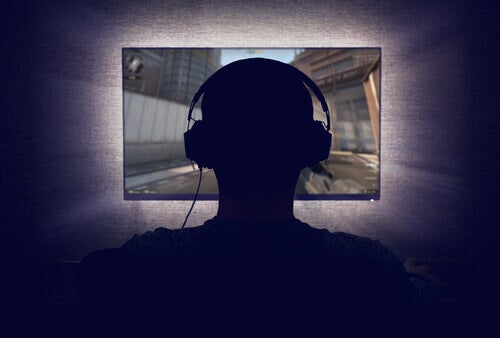The Hikikomori are young Japanese people who avoid leaving their rooms. In Japanese culture, loneliness has always been a traditional value that represented self-research and wisdom, nature and social relationships. In a sense, it’s a feudal perspective, albeit a positive one. But in today’s Japanese society, constructive loneliness has become pathological isolation.
After World War II, Japanese society began to develop economically frantically, resulting in an increasingly demanding and competitive pace of study and work. Young people received an increasingly rigid education, manifested in an education system that fostered a strong discipline of knowledge. acquisition, setting aside the communicative and psychological problems of students in the classroom.
- Hikikomori’s families see their children as a disgrace.
- As something to hide from neighbors and family members.
- For fear of scandals and possible stigma.
Exposed to these pressures from their families and society, young Japanese have developed a form of isolation unknown to the Western world: they have locked themselves in their rooms for months or years with no intention of returning to the real world.
The first person to invent Hikikomori was Japanese psychiatrist Tamaki Saito, in his book “Hikikomori, Rescue Manual”, in 2002. In this book, he describes young Japanese people who are isolated in their rooms as victims of an increasingly suffocating and competitive education system. and the labour market. He points out that the main problem is the mis-communication between parents and children of some Japanese families.
Japanese society has been growing at breakneck speed in recent decades, but in recent years there has been an economic crisis in which if someone wants to move socially you have to demonstrate impeccable skill and discipline, many couples who lived through this economic growth had only one child. They placed in this son all hopes for a better future and may have projected on him the frustrated desires of his youth.
Families make enormous financial efforts to help their children win the labor market, taking them to the best schools, with many after-school activities and a program that leaves no room for recreation and relationships with peers.
Schools in Japan have a very demanding and varied level of education and curriculum, have a dynamic of constant exams, homework, and strict teacher supervision in relation to student activities. Japanese youth often have intensive extracurricular sessions that involve evenings and weekends. at school.
But that’s not all: sometimes intensive camps are organized in schools, where students sleep and eat in classrooms, and are evaluated in different subjects until they learn, many of them do not sleep if they fail to solve all the tests to which they are subjected.
“Never consider study as an obligation, but as an opportunity to delve into the beautiful and wonderful world of knowledge. -Albert Einstein-
However, many of them never manage to adapt, either because they have special educational needs or because such intense stress causes the development of various psychological disorders. Unfortunately, Japan has a poor support network to help these young people who are increasingly disturbed by this pace. .
Many of these children and many of these teens begin to see their peers in fear and mistrust, and many of them are persecuted for their poor performance in relation to the group or for other personal aspects. Young people do not receive asistencia. de of any psychologist or social educator in schools, further exacerbating the problem.
In addition, they see the labor market not as a tool to satisfy their personal independence and put their skills into practice, but as a hostile terrain against which they fear not to live up to it and not to be productive.
Many of them find themselves alone, tense, isolated, pressured by their families and with a professional future very competitive for their abilities. Add to this the incredible technological development of the country, we have a homemade bomb: many of these young people will. Be more attracted to isolation and to create a “virtual life”. It’s a way of saying enough to society and their families.
Hikikomori’s families see their children as a disgrace, as something to hide from neighbors and family members, for fear of scandals and possible stigma, and believe it can be an ephemeral problem.
However, if a young man is locked in his room for weeks and there is no clear answer from parents, the problem tends to become chronic, young people drop out of school and lock themselves in their rooms in social isolation, eat, sleep and have their virtual leisure between these 4 walls.
The world is better at informing people through a computer, watching movies, reading manga, playing video games, listening to music and sleeping, they have very limited personal hygiene and if they need to cut their hair, for example, they do it themselves. Years go by like this. And today it is an epidemic in Japan, because there are about two million Hikikomori in the country.
Young Japanese are victims of an increasingly stifling and competitive education system and job market.
The Japanese authorities have already put in place an intervention plan, because it is a great loss for an entire generation. They are also looking for ways to help these young people. Many psychologists point out that the best intervention is the systemic family, in order to gradually communicate the family with the young person and be able to remove him from the lockdown.
Reintegration into society must be gradual and often the Recovered Hikikomori are the people who guide and support these young people to get out of this voluntary confinement. The problem is not that of social phobia, agoraphobia or excessive shyness, problems that exist in other countries of the world; so your approach has to be different.
The solution would be more preventive in nature, as Japanese society must take note of this problem in order to reduce the level of demand and social isolation it promotes in its schools.

